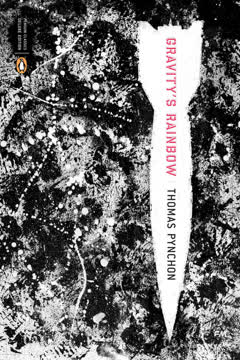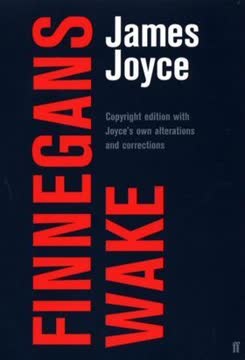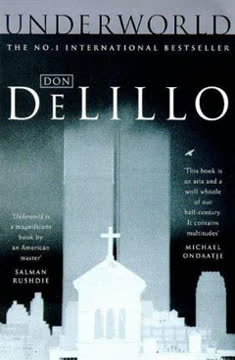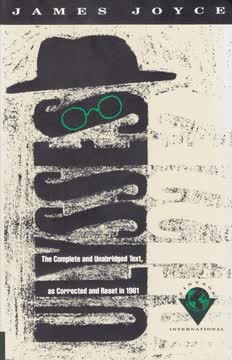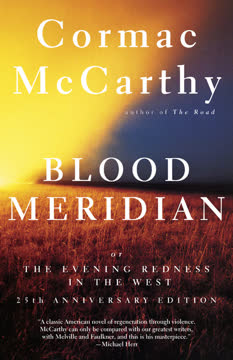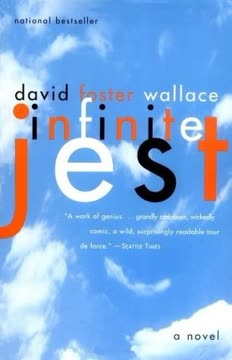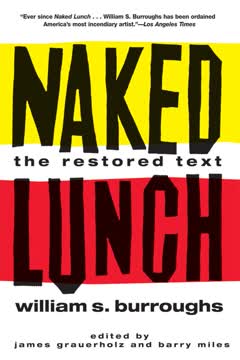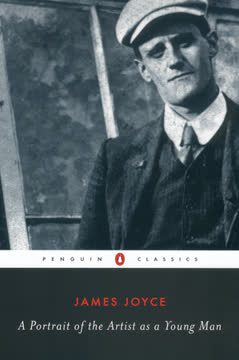Plot Summary
The Screaming Sky
In the darkness of wartime London, a scream splits the sky—the arrival of a German V-2 rocket. The city is gripped by fear and uncertainty, as the randomness of death from above becomes a daily reality. The evacuation is a performance, a ritual of survival, as people huddle together in the velvet blackness, haunted by the knowledge that no one is truly safe. The protagonist, Pirate Prentice, awakens among comrades, his mind already attuned to the strange, surreal rhythms of war. The city's fate is tied to the trajectory of rockets, and the people's hope is as fragile as the glass that may shatter at any moment. The chapter sets the tone of dread, absurdity, and the search for meaning amid chaos.
Bananas and Bombs
Pirate Prentice's famous banana breakfast is a momentary escape from the war's terror, a celebration of life and camaraderie. Yet, even as the household indulges in the tropical feast, the threat of rockets looms. Pirate's ability to inhabit others' fantasies is revealed—a talent exploited by the shadowy Firm. The chapter weaves together the mundane and the extraordinary, the comfort of routine and the anxiety of annihilation. The city's survival is a matter of chance, and the characters' attempts to find solace are tinged with the knowledge that the next rocket could end it all.
Mapping Desire
Lieutenant Tyrone Slothrop, an American in London, obsessively maps his sexual encounters across the city, each marked by a colored star. Unbeknownst to him, these stars coincide with the sites of rocket strikes, a pattern that baffles and intrigues the intelligence community. The randomness of the rockets' impact is mirrored in the randomness of desire, and the city becomes a labyrinth of connections, both erotic and fatal. Slothrop's isolation is palpable, his relationships fleeting, as he navigates a world where love and death are inextricably linked.
The Shadow of Rockets
The narrative delves into the scientific and psychological efforts to understand the rockets' impact. Roger Mexico, a statistician, applies the Poisson distribution to predict rocket strikes, while Dr. Pointsman, a Pavlovian behaviorist, seeks to unravel Slothrop's mysterious connection to the rockets. The war is a laboratory, and the city's suffering is data. The characters grapple with the illusion of control, the limits of reason, and the seductive power of paranoia. The shadow of the rocket becomes a metaphor for fate, trauma, and the human compulsion to find patterns in chaos.
The Tyrone Paradox
Slothrop's past is revealed through a series of fragmented memories and psychological experiments. As a child, he was subjected to conditioning by Dr. Laszlo Jamf, linking sexual arousal to mysterious stimuli. This conditioning may explain his adult behavior and the uncanny correlation between his erections and rocket strikes. The narrative blurs the line between cause and effect, past and present, as Slothrop becomes both subject and object of a vast experiment. His identity is unstable, his agency uncertain, as he is pursued by forces he cannot comprehend.
The White Visitation
The White Visitation, a country estate repurposed for psychological intelligence, is a microcosm of the war's surreal logic. Here, mediums, statisticians, and behaviorists collaborate and compete, each with their own agenda. Séances, experiments, and betrayals unfold in a fog of secrecy. The characters' personal dramas—love, jealousy, ambition—are entangled with the larger machinery of war. The boundaries between science, magic, and the limits of reason, sanity and madness, are porous. The house is haunted by the ghosts of the past and the specter of the future.
Patterns of Control
The narrative expands to reveal the hidden networks of power that shape the war and its aftermath. The IG Farben cartel, the intelligence agencies, and the shadowy Firm manipulate events from behind the scenes. The characters are pawns in a game they barely understand, their actions anticipated and exploited by larger systems. The quest for the rocket's secret becomes a quest for autonomy, for a way out of the labyrinth of control. Yet, every attempt at resistance is met with co-optation, every act of rebellion is absorbed by the system.
The Zone's Labyrinth
With the war's end, Europe becomes the Zone—a space of lawlessness, possibility, and danger. Displaced persons, scavengers, and survivors wander the ruins, seeking purpose and connection. Slothrop embarks on a journey across the Zone, pursued by various factions, searching for the mysterious Schwarzgerät ("black device") and his own lost self. The boundaries between friend and enemy, reality and hallucination, blur. The Zone is a labyrinth without a center, a place where identities dissolve and new forms of community emerge.
The Schwarzkommando March
The Schwarzkommando, a group of African rocket technicians descended from survivors of German colonial genocide, march across the Zone with their own rocket. Led by Enzian, they seek to reclaim agency and confront the legacy of violence. Their journey is both literal and symbolic—a quest for justice, memory, and a new beginning. The narrative explores themes of race, colonialism, and the possibility of redemption. The Schwarzkommando's march is a counterforce to the systems of control, a movement toward a different future.
The Pursuit of Zero
The characters are drawn toward the concept of zero—absolute stasis, the end of history, the cessation of desire. Some, like the Empty Ones, embrace sterility and extinction as a form of resistance. Others seek transcendence through technology, mysticism, or violence. The rocket becomes a symbol of both death and rebirth, destruction and creation. The narrative circles around the question of whether escape from the cycle of domination and submission is possible, or whether all attempts are ultimately co-opted by the system.
The Counterforce Awakens
A loose coalition of outcasts, visionaries, and survivors—the Counterforce—emerges to challenge the structures of power. Their efforts are fragmented, often absurd, and frequently self-defeating. Yet, in their failures and solidarities, they embody a different way of being, a refusal to accept the world as it is. The Counterforce's struggle is both tragic and comic, a testament to the persistence of hope amid despair. The narrative questions whether true revolution is possible, or whether the system will always adapt and absorb its challengers.
The Last Assembly
As the various threads converge, the characters assemble for the last time. The rocket is prepared for its ultimate launch, and the fate of the Zone hangs in the balance. Old alliances are tested, secrets are revealed, and the possibility of escape or transformation flickers. The assembly is both a culmination and a dissolution, a moment of clarity before the fall. The characters confront their own mortality, the limits of their agency, and the meaning of their journey.
The Rocket's Ascension
The rocket rises, carrying with it the hopes, fears, and contradictions of all who have touched it. For some, it is a vehicle of liberation; for others, a harbinger of death. The ascent is both literal and metaphysical—a passage beyond the known, into the realm of myth and possibility. The boundaries between self and other, past and future, dissolve. The narrative reaches its apotheosis, a moment of awe and terror, as the rocket becomes a symbol of both the end and the beginning.
The Shadow Falls
In the wake of the rocket's flight, the Zone is left in a state of suspension. The characters are scattered, their fates uncertain. The systems of control persist, but so do the seeds of resistance. The narrative refuses closure, leaving open the possibility of renewal or repetition. The shadow of the rocket lingers, a reminder of the costs of power and the fragility of hope. The story ends as it began, with a scream across the sky—a question without an answer.
The End and the Beginning
The final chapter reflects on the cyclical nature of history, the recurrence of trauma, and the enduring search for meaning. The characters' journeys are both unique and universal, their struggles echoed in every generation. The rocket's trajectory is both a fall and a flight, a descent into darkness and a leap toward the light. The narrative invites the reader to consider their own place in the cycle, their own capacity for resistance, and the possibility of transformation. The end is also a beginning, a call to awaken from the dream and enter the world anew.
Characters
Tyrone Slothrop
Slothrop is an American lieutenant stationed in London, whose sexual encounters uncannily predict the sites of V-2 rocket strikes. Conditioned as a child by sinister psychological experiments, he becomes the unwitting subject of a vast conspiracy. Slothrop's journey through the Zone is a quest for identity, agency, and meaning amid chaos. As he is pursued by various factions, his sense of self dissolves, and he becomes a symbol of the preterite—the overlooked, the powerless, the expendable. Slothrop's psychological fragmentation mirrors the disintegration of the world around him, and his fate is left ambiguous, a testament to the novel's refusal of closure.
Pirate Prentice
Pirate is a British intelligence officer with the uncanny ability to inhabit and manage the fantasies of others. This talent makes him valuable to the shadowy Firm, but also isolates him from genuine connection. Pirate's psychological landscape is shaped by the absurdities of war, the demands of authority, and his own longing for authenticity. His relationships—with Scorpia Mossmoon, with his comrades, with the larger machinery of power—are marked by ambivalence and irony. Pirate embodies the tension between complicity and resistance, fantasy and reality.
Roger Mexico
Roger is a British statistician whose application of the Poisson distribution to rocket strikes reveals the illusion of control and the randomness of death. His love affair with Jessica Swanlake is a fragile oasis amid the war's devastation, but ultimately succumbs to the pressures of peace and the demands of the system. Roger's faith in reason is tested by the irrationality of war, the seductions of paranoia, and the limits of human connection. His journey is one of disillusionment, but also of persistent hope for a different kind of community.
Jessica Swanlake
Jessica is an ATS officer whose relationship with Roger Mexico is both a refuge and a battleground. Torn between love and duty, desire and conformity, she embodies the psychological costs of war and the ambiguities of peace. Jessica's choices are shaped by the expectations of gender, class, and nation, as well as her own longing for safety and meaning. Her eventual return to conventional life is both a betrayal and a survival strategy, a testament to the novel's nuanced portrayal of agency.
Dr. Pointsman
Pointsman is a Pavlovian psychologist obsessed with discovering the mechanisms of human behavior. His experiments on Slothrop and others are driven by a desire for mastery, certainty, and power. Pointsman's worldview is mechanistic, reductionist, and ultimately dehumanizing. His rivalry with Roger Mexico and his manipulation of the White Visitation's resources reveal the dangers of scientific hubris and the seductions of authority. Pointsman's psychological rigidity is both his strength and his undoing.
Enzian
Enzian is the leader of the Schwarzkommando, a group of African rocket technicians descended from survivors of German colonial genocide. His journey is one of memory, mourning, and resistance. Enzian grapples with the legacy of violence, the possibility of redemption, and the search for a new beginning. His relationship with Blicero is fraught with ambivalence, desire, and the longing for transcendence. Enzian embodies the novel's exploration of race, history, and the possibility of counterforce.
Katje Borgesius
Katje is a Dutch double agent whose beauty and intelligence make her both a prize and a pawn. Her relationships—with Blicero, with Slothrop, with Pirate—are marked by manipulation, vulnerability, and the search for autonomy. Katje's psychological complexity is shaped by trauma, survival, and the demands of espionage. She is both subject and object, agent and victim, in the novel's web of power.
Captain Blicero (Weissmann)
Blicero is a German SS officer obsessed with the rocket as a vehicle of transcendence and annihilation. His relationships—with Enzian, with Katje, with Gottfried—are marked by domination, submission, and the longing for escape from history. Blicero's psychological landscape is shaped by guilt, desire, and the pursuit of zero. He is both a perpetrator and a victim, a symbol of the novel's darkest impulses.
Gottfried
Gottfried is a young German conscript chosen by Blicero to be the "sacrificial lamb" inside the final rocket. His passivity, beauty, and vulnerability make him both an object of desire and a symbol of innocence destroyed. Gottfried's fate is to be consumed by the machinery of war, his individuality erased in the service of a larger narrative. He embodies the costs of submission, the tragedy of lost potential, and the possibility of grace.
Laszlo Jamf
Jamf is the shadowy figure behind Slothrop's childhood experiments, a chemist and psychologist whose work bridges the worlds of science, magic, and control. His legacy is one of manipulation, trauma, and the blurring of boundaries between self and system. Jamf's presence haunts the novel, a reminder of the ways in which individuals are shaped by forces beyond their understanding.
Plot Devices
The Rocket as Central Motif
The V-2 rocket is the novel's central image, embodying the intersection of technology, power, and the human psyche. Its trajectory is both literal and metaphorical—a path through history, a vehicle of destruction, a symbol of transcendence. The rocket's randomness mirrors the randomness of desire, death, and meaning. Its construction and launch are rituals of both control and surrender, science and magic. The rocket's shadow falls across every character, shaping their actions, fears, and hopes.
Paranoia and Conspiracy
The narrative is structured around the interplay of conspiracies, both real and imagined. Intelligence agencies, corporate cartels, and shadowy organizations manipulate events from behind the scenes, while the characters struggle to discern patterns and assert agency. Paranoia becomes both a survival strategy and a form of madness, a way of making sense of chaos and a trap that ensnares the mind. The novel's structure mirrors this labyrinth, with multiple plotlines, shifting perspectives, and unresolved mysteries.
Fragmentation and Multiplicity
The novel employs a fragmented, nonlinear structure, reflecting the psychological and historical disintegration of its world. Characters are split, doubled, and dissolved; identities are unstable, boundaries porous. The narrative voice shifts between first, second, and third person, between realism and surrealism, between comedy and tragedy. This multiplicity is both a source of confusion and a strategy of resistance, a refusal to be pinned down by any single meaning or authority.
Science, Magic, and the Limits of Reason
The novel juxtaposes scientific rationality with mysticism, magic, and the occult. Experiments, equations, and statistics coexist with séances, tarot readings, and alchemical rituals. The search for control is always undermined by the persistence of the irrational, the unpredictable, the unknowable. The narrative questions the adequacy of any system—scientific, political, or personal—to account for the complexity of experience.
Foreshadowing and Recurrence
The novel is rich in foreshadowing, with images, motifs, and events recurring in altered forms. The past is never past; trauma, desire, and violence return in new guises. The structure of the rocket's flight—launch, ascent, descent, impact—mirrors the structure of the narrative, the arc of history, and the cycles of individual lives. The ending is both a culmination and a return to the beginning, a scream across the sky that echoes through time.
Analysis
Gravity's Rainbow is a monumental exploration of the intersection between technology, power, and the human psyche, set against the backdrop of World War II and its aftermath. Pynchon's narrative is a labyrinthine journey through paranoia, desire, and the search for meaning in a world shaped by systems of control—military, scientific, corporate, and psychological. The rocket, as both weapon and symbol, embodies the novel's central tensions: the drive toward transcendence and the pull of annihilation, the promise of progress and the reality of destruction. The characters' struggles—fragmented, absurd, and poignant—reflect the broader disintegration of history and identity in the modern era. The novel interrogates the possibility of resistance, the limits of agency, and the persistence of hope amid despair. Its refusal of closure, its embrace of multiplicity, and its relentless questioning of authority make it a work of enduring relevance, challenging readers to confront the structures that shape their own lives and to imagine new forms of community, meaning, and freedom.
Last updated:
Review Summary
Gravity's Rainbow is a complex, ambitious novel that polarizes readers. Many praise its brilliance, dense prose, and hallucinatory style, while others find it incomprehensible and vulgar. The book follows characters in World War II and its aftermath, exploring themes of paranoia, control, and technology. Readers note its difficulty, with multiple plotlines and hundreds of characters. Some view it as a masterpiece of postmodern literature, while others struggle with its obscure references and explicit content. Despite its challenges, many find the novel rewarding and unforgettable.
Similar Books
Download PDF
Download EPUB
.epub digital book format is ideal for reading ebooks on phones, tablets, and e-readers.
